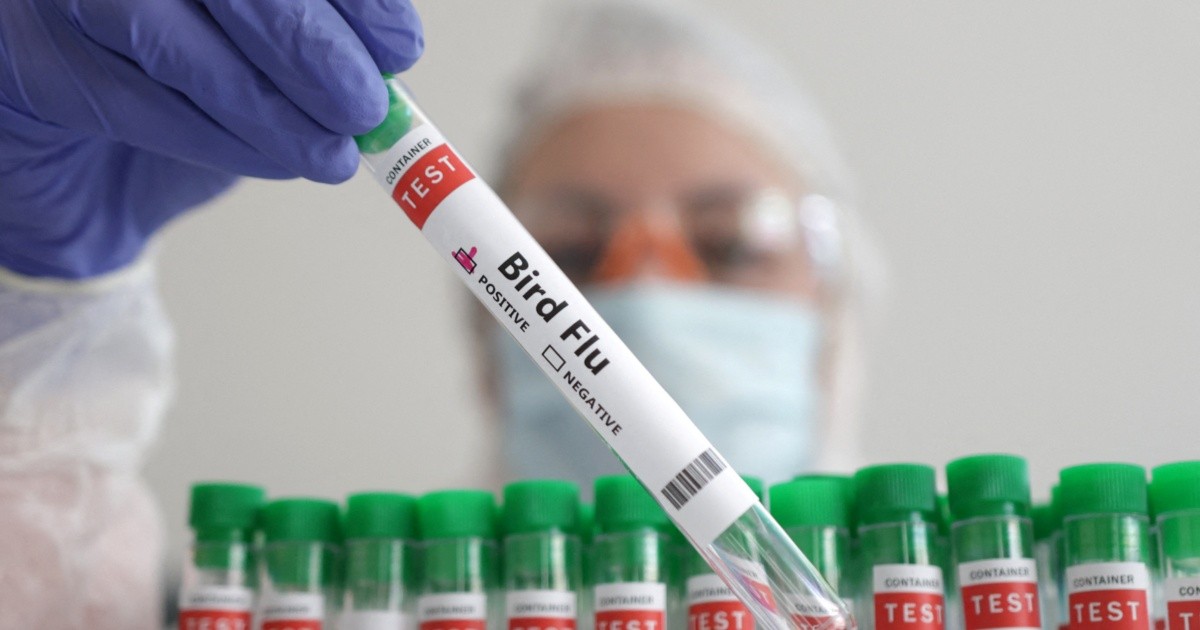We are currently attending worst bird flu outbreak in history, which is causing massive deaths of birds and is beginning to affect many mammals. The scenario is disturbing, since there are concerns that another major global outbreak will be triggered.
But what do we know about the H5N1 bird flu virus?
What is the highly pathogenic H5N1 avian influenza virus?
There are four types of seasonal influenza viruses, called influenza A virus, influenza B virus, influenza C virus, and influenza D virus. All known influenza pandemics have been caused by influenza A viruses, which are solely responsible for avian influenza, in addition to causing the common flu in humans and swine and equine flu.
The ancestral reservoir of all type A are waterfowl, particularly those included in the order Anseriformes, to which geese or ducks belong, and in the order Charadriiformes, where gulls are found.
Type A influenza viruses can be divided into different subtypes depending on the genes that make up the surface proteins: hemagglutinin (H) and neuraminidase (N). Both proteins are the antigens that are recognized by the host’s immune system.
There are 18 different hemagglutinin subtypes and 11 different neuraminidase subtypes, H1 to H18 and N1 to N11, respectively. This implies that there are potentially dozens of combinations of influenza A subtype, being H5N1 one of them. Within each subtype there is considerable variability, which affects the pathogenicity of the strain.
What is the scope of the current outbreak?
During 2020, H5N1 viruses of the 2.3.4.4b clade of highly pathogenic avian influenza (HPAI) emerged from previously circulating viruses. This clade spread predominantly through migratory birds to many parts of Africa, Asia, and Europe. And they became a threat to animal and human health across the planet.
The epizootic – the equivalent of an epidemic but in animals – caused unprecedented numbers of outbreaks in domestic poultry and deaths in wild birds. Between October 2021 and December 2022, Europe suffered a total of 2,918 outbreaks in poultry and 378 outbreaks in captive birds.registered 4,480 infections in wild birds and culled 50 million birds in the affected establishments.
These viruses crossed over to North America at the end of 2021, and later to South America in the fall of 2022.
Can it infect mammals?
In the last weeks, more than 600 sea lions have been found dead or dying on Peruvian beaches in what was the first massive mortality event of wild mammals due to H5N1 avian influenza in South America.
And it is not exceptional. Some of the recent genotypes have caused severe infections with neurologic signs in mammals such as badgers, bobcats, coyotes, dolphins, ferrets, foxes, lynx, opossums, otters, pigs, porpoises, raccoons, dogs, and mink.
Specifically, the H5N1 viruses of the 2.3.4.4b clade detected at the end of 2022 in mink from a Spanish farm have a rare mutation (T271A) in the PB2 gene which may have implications for public health. In fact, the same mutation is present in the avian-type PB2 gene of the 2009 pandemic swine-origin influenza A(H1N1) virus (H1N1pdm).
The studies in vitro suggest that viruses with the T271A mutation could more easily infect mammals, including humans.
Is it dangerous for humans?
The H5N1 highly pathogenic avian influenza (HPAI) virus of Asian origin was first detected in 1996 in geese in China, and for the first time in humans in 1997 amid an outbreak originating in poultry in Hong Kong.
Worldwide, from January 2003 to January 2023, they have been notified 868 cases of human infection with avian influenza A(H5N1) virus in 21 countries. Of these, 457 were fatal, representing a mortality of 53%.
Between 2020 and 2022, the total number has been 7 cases and 2 deaths.
Virus sequences from these human cases, where available, did not show markers for mammalian adaptation or resistance to antiviral drugs used against H5N1 such as oseltamivir and baloxavir.
Fortunately, at the moment this virus does not have the ability to easily bind to receptors in the upper respiratory tract of humans, which means that transmission is difficult.
Another piece of good news is that, to date, no person-to-person transmission has been detected. Based on available information, human population immunity against clade 2.3.4.4b is expected to be minimal.
Who is more at risk?
The people most vulnerable to infection are those who directly or indirectly maintain close and regular contact with birds (domestic, wild or captive). For example, poultry farmers, veterinarians, slaughterers, infected farm staff, etc.
For this reason, the use of adequate personal protective equipment (PPE) and other protection measures is recommended to avoid zoonotic transmission in these operators.
What symptoms does bird flu present in humans?
The main clinical symptoms Avian influenza in humans are fever over 38 degrees, muscle pain, respiratory distress, cough and malaise. In addition, most patients have a significant decrease in lymphocytes and abnormalities in liver enzymes.
The first symptoms appear 2 to 8 days after infection.
Are there treatments available?
It is recommended that infected people receive treatment as soon as possible with antiviral drugs. Some of the recommended treatments in the first instance they are oseltamivir, zanamivir, peramivir and baloxavir.
Are there vaccines?
Candidate vaccine viruses against different H5 clades are currently under development and are updated regularly, twice a year, during WHO Vaccine Composition Meetings.
At the moment, there is candidate vaccine viruses that have passed relevant safety tests, such as A(H5N8) clade 2.3.4.4b made from A/Astrakhan/3212/2020 and an A(H5N1)-like virus, A/chicken/Ghana/AVL-76321VIR7050- 39/2021.
The US Centers for Disease Control and Prevention have produced an experimental vaccine virus almost identical to the haemagglutinin (HA) protein of the H5N1 clade 2.3.4.4b viruses detected in recent months in birds and mammals. If necessary, it could be used to produce a vaccine for people.
On the other hand, in November 2022, an article published in Science showed that an mRNA vaccine in development protected mice and ferrets against 20 known subtypes of influenza A and B viruses.
What preventive measures are useful?
Some simple measures are the following:
-
Avoid direct and close contact with sick or dead wild birds, poultry and wild animals.
-
Do not eat poultry or poultry products that are raw or undercooked, including raw eggs. Consumption of properly cooked poultry, poultry products, and eggs is safe.
-
Wash your hands with soap and water and practice extreme hygiene after handling birds.
-
Do not touch your mouth, nose, or eyes after contact with birds or surfaces that could be contaminated with droppings or fluids from domestic or wild birds.
In addition, it is advisable that people who may be exposed to sick birds get vaccinated for seasonal flu.
Does it have the potential to cause a pandemic?
It is difficult to predict when the next flu pandemic will occur and which virus will cause it. To date, there is no evidence of sustained person-to-person transmission of highly pathogenic H5N1 virus and no evidence of genetic rearrangement with human influenza A viruses.
However, highly pathogenic H5N1 viruses are constantly changing, and the numerous current outbreaks increase the possibility of human exposure to infected birds or adaptation of the virus to other mammalian species that may act as an intermediate species.
Therefore, it is essential maintain prevention, surveillance, detection and control tasks about the present and future episodes that the H5N1 virus will lead, because the current ones will not be the last we see.
Raul Rivas GonzalezProfessor of Microbiology, University of Salamanca
This article was originally published on The Conversation. read the original.














